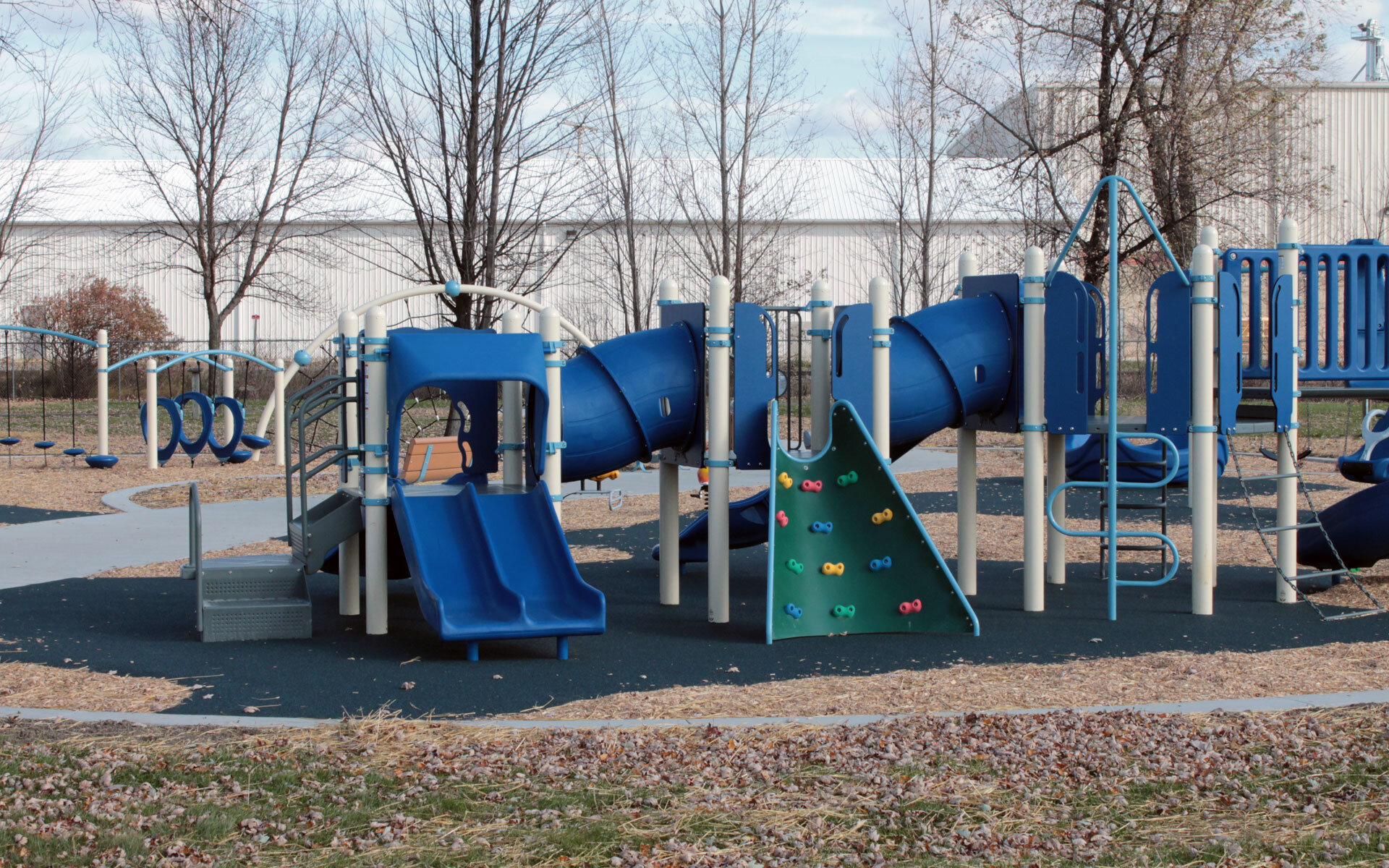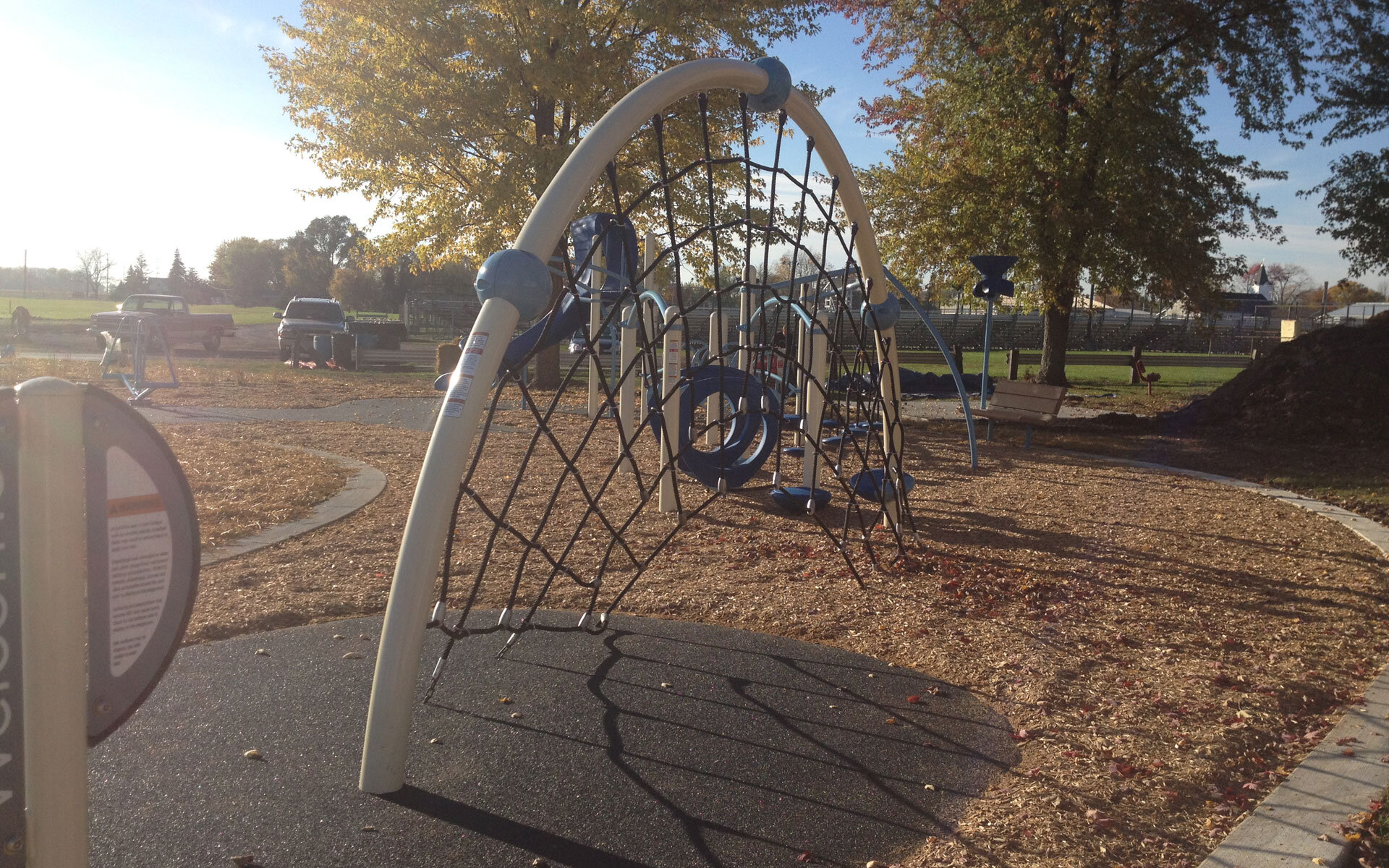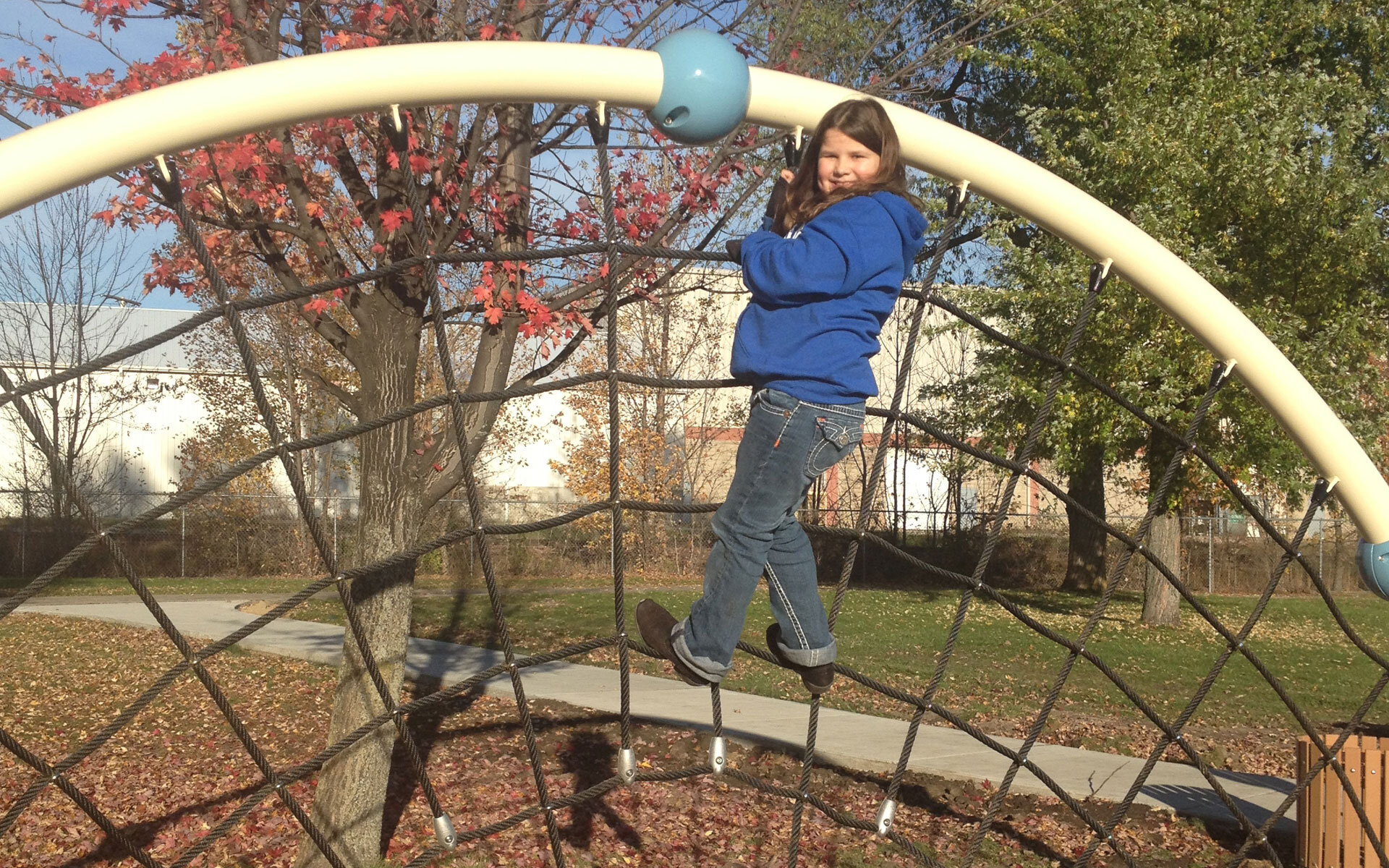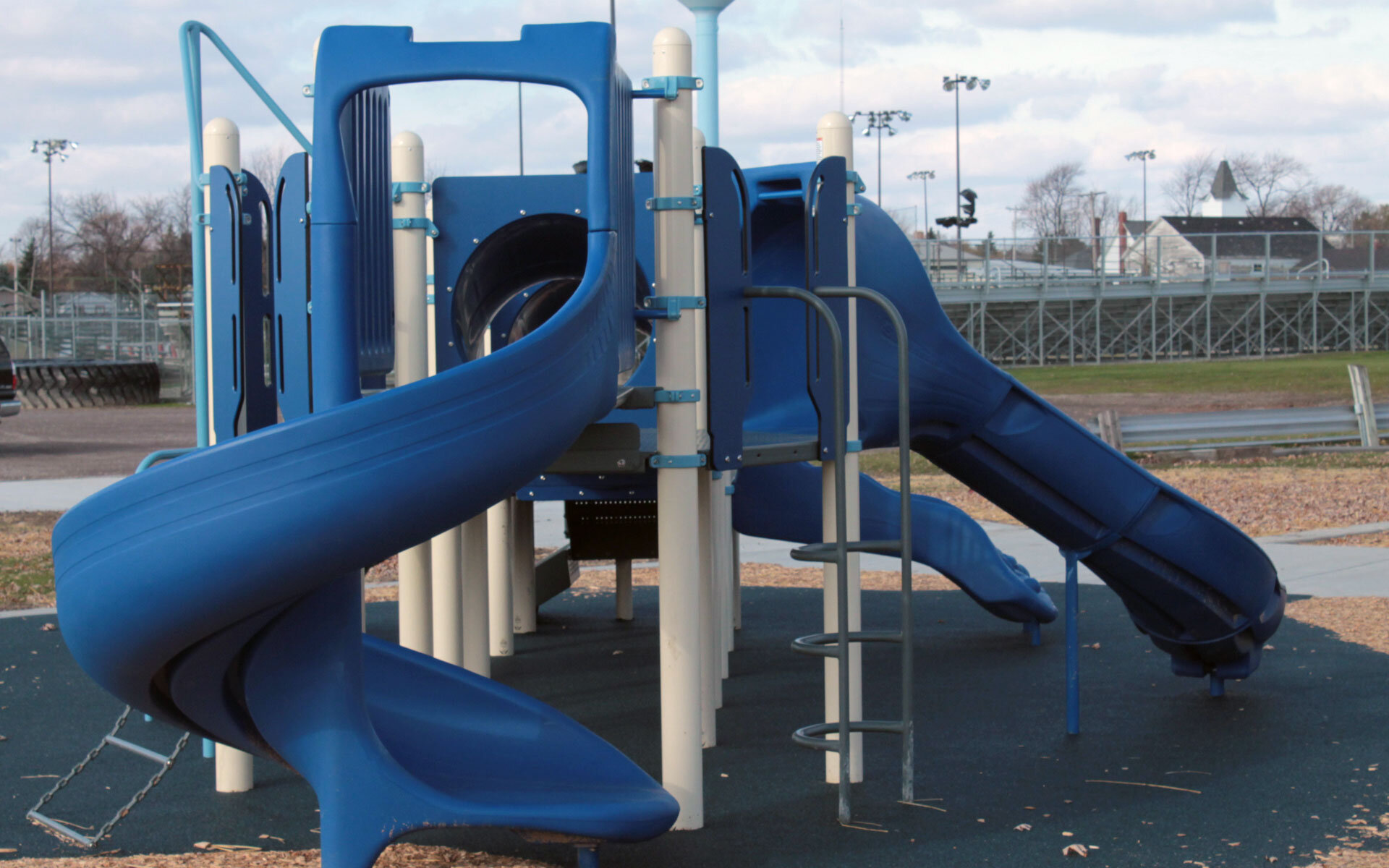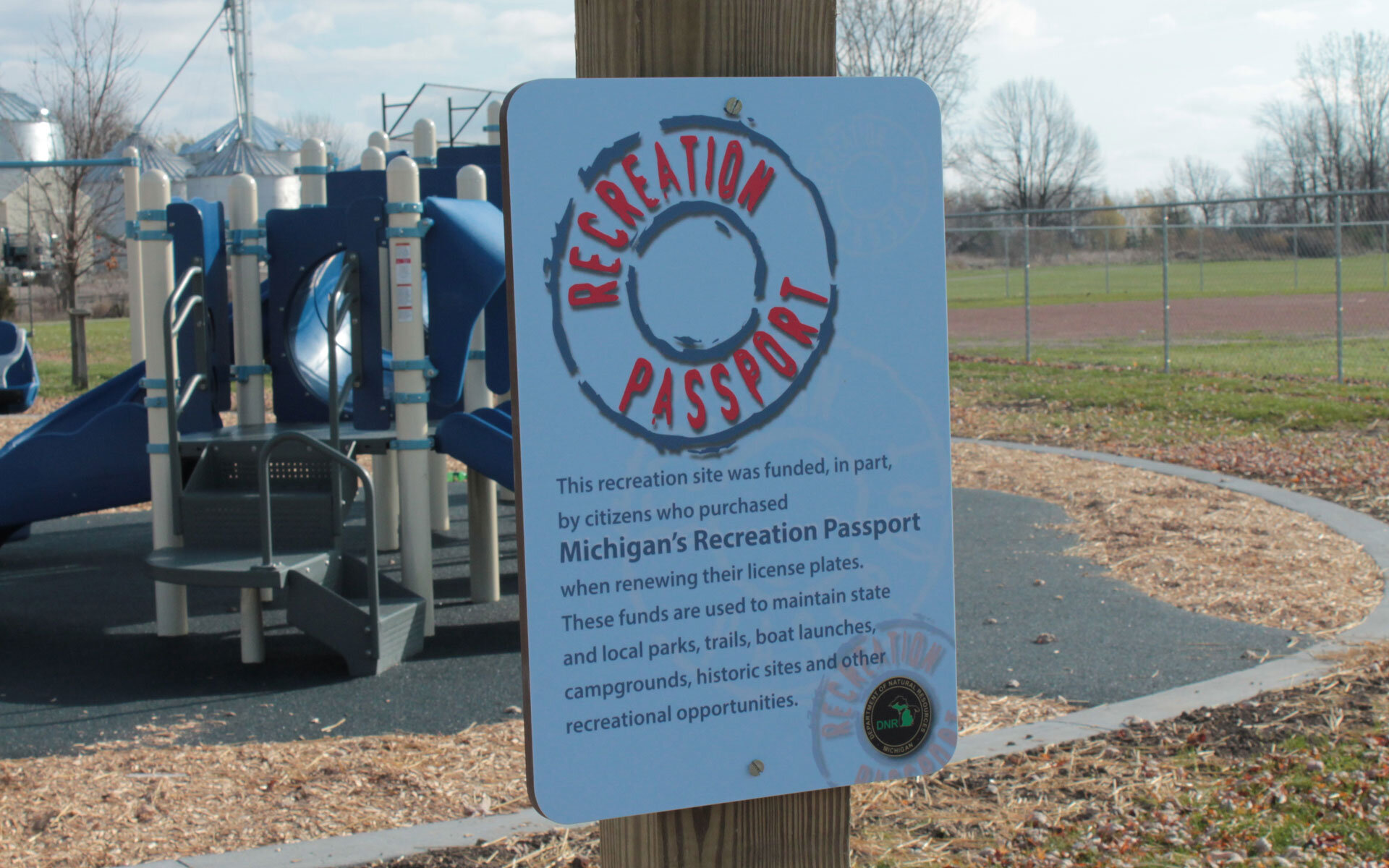Merritt Township, Habina Park
For many years, the community playground in Merritt Township was home to equipment that was decades old. Updating that equipment became a priority for Township officials in order to provide a safe environment for children to play and revive some life back into the small community’s only park.
In 2013, after a local resident left Merritt Township a portion of his estate to be used for park improvements, Spicer Group assisted Township officials in gaining a Michigan Department of Natural Resources (DNR) Recreation Passport Grant for $45,000 for a new universally-accessible playground.
Spicer also assisted the Township in designing the new playground, which now has a circular pattern, with separate areas for 2-5 year olds and 5-12 year olds. A new meandering concrete access path was installed to provide separation between the two play areas. In addition to connecting to the parking area and to the existing perimeter path, the meandering width of the pathway accommodates seating areas without impeding the flow of traffic through the play area. To accentuate the playground, landscaping was added with rain gardens. The rain gardens provide a drainage system for the playground while also softening the edges of the hardscape.
The new playground safety surfacing is accessible and constructed from poured-in-place rubber and engineered wood fiber. The rubber surfacing was strategically placed in key circulation areas to provide access for ingress and egress on multiple locations of the structures. Some support amenities were also installed, such as benches, trash receptacles, and a bike rack. A basketball drop shot was also installed and new grills were provided near the park’s existing pavilion.
With the success of the playground, Spicer assisted the Township with a DNR Land and Water Conservation Fund grant for $50,000. This grant renovated the existing tennis courts into one tennis court with pickle ball court and a basketball court, added additional accessible parking and walkways. A bio-swale with native plantings was designed into the project to accept storm water runoff from the project elements.

